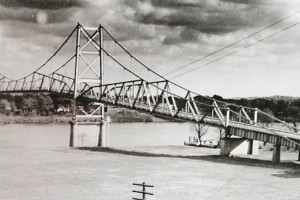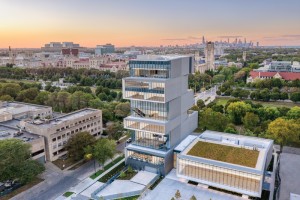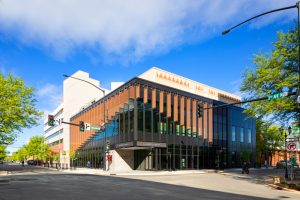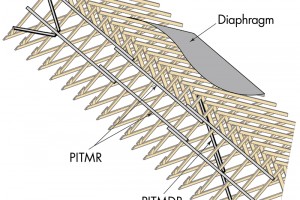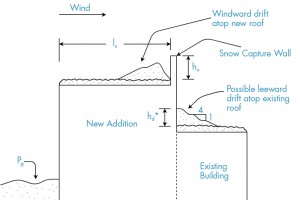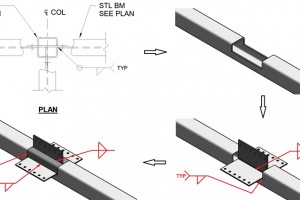Upon hearing I was retiring, my Cal Berkeley friend and colleague, John Dal Pino, Chair of the STRUCTURE magazine Editorial Board, asked if I would share some thoughts about my nearly 40 years (WHAT? – how did that happen?) practicing as a Structural Engineer. He suggested many topics, and these were the ones that resonated most with me.
…Review Category : Articles
The Silver Bridge across the Ohio River connecting Point Pleasant (West Virginia) and Gallipolis (Kanauga, Ohio) was opened to traffic on May 30, 1928, along with a sister bridge connecting St. Mary’s (West Virginia) and Gallipolis (Ohio), also across the Ohio River. It was called the Silver Bridge due to the color of paint used and was built just north of the intersection of the Kanawha River with the Ohio River. They were both vehicular bridges built as toll bridges by the Gallia County Ohio Bridge Company. The federal government’s approval was required, and bills were submitted to House and Senate for consideration. In December 1926, The Corps of Engineers informed the Bridge Company they must, in accordance with the act, submit a “plan of the bridge showing the length and height of spans; width of draw openings; position of piers, abutments, fenders, etc.”
…The David Rubenstein Forum at the University of Chicago is a new center for intellectual exchange, scholarly collaboration, and special events. The 97,000-square-foot facility consists of a 2-story podium and a 10-story tower of stacked “neighborhoods” with a zinc-and-glass exterior. A 285-seat auditorium sits above the podium, and a large multipurpose space on the 2nd Floor, called the University Room, can accommodate groups of up to 600 people. The top of the tower features a flat-floor multipurpose space and offers stunning views of the campus, the Midway Plaisance, the city skyline, and Lake Michigan.
…The historic Alberta Bair Theater renovation was an exercise in forensic investigation, creative detailing and problem-solving, and construction coordination. Lack of original drawings, combined with a previous remodel, required extensive field research to document existing construction and load paths. Close coordination during construction was necessary to validate designs and deliver final details. Due to rigging capacities, the theater was also at risk of not booking new acts. Creative structural solutions were implemented to nearly triple the technical rigging capacity of the theater, all while reducing the net loading on existing members.
…In 2003, the Structural Engineering Certification Board (SECB) was established with a simple mission with three straightforward goals: Promote structural engineering licensure (SE) in all jurisdictions; determine the unique and additional qualities (beyond a professional engineering license) necessary to practice structural engineering; and provide the engineering profession, the public, and other stakeholders with a way to identify engineers with these unique and additional qualifications. Originally formed through a group of past presidents of the National Council of Structural Engineers Associations (NCSEA) as an interim step towards SE licensure, SECB eventually became a financially stable organization with certificate holders in all 50 states and a roster of more than 1,200 certified structural engineers. While states would not initially recognize this new SECB certification, the vision was to create momentum within the structural engineering community for higher credentialling that would serve as a model or bridge for SE licensure adoption in more states.
…For many in the structural engineering industry, when we hear of the SEI standards, we automatically think of the ASCE/SEI 7, Minimum Design Loads and Associated Criteria for Buildings and Other Structures, and that is where our knowledge stops. However, the Codes and Standards Activities Division (CSAD) of SEI is responsible for developing and updating twenty-five standards.
…Continuing our series on automation, I sat down (virtually) in September 2021 with two more industry experts in digital design: Michael Bolduc, P.E., a Senior Project Manager at Simpson Gumpertz & Heger, and Dr. Kristopher Dane, Vice President and Director of Digital Design at Thornton Tomasetti. Both serve on the SEI Digital Design Committee. Below are highlights from our discussion.
…Part 5: Wood (Chapter 23)
This five-part series discusses significant structural changes to the 2021 International Building Code (IBC) by the International Code Council (ICC). Part 5 includes an overview of changes to Chapter 23 on wood. Only a portion of the total number of code changes to this chapter is discussed in this article. More information on the code changes can be found in the 2021 Significant Changes to the International Building Code, available from ICC (Figure 1).
…Part 2
The American Society of Civil Engineers’ ASCE 7-22 load standard, Minimum Design Loads for Buildings and Other Structures, is now available, and substantive changes have been made to both the snow and rain provisions. This article is the second in a two-part series regarding these changes. Part 1 (STRUCTURE, January 2022) reviewed changes to the ground snow loads, which represents a shift away from uniform hazard to uniform risk, and the addition of a winter wind parameter to account for the variability in winter wind speeds on drift loads. This article reviews other revisions to the snow loads, including a more accurate estimation of the horizontal extent of windward drifts, revised thermal factors Ct to account for current trends in roof insulation and venting, and guidance on design loads for snow capture walls added to this edition. Also, changes were made to Chapter 8 to include a ponding head to the rain load, which provides a consistent approach to assess ponding.
…Part 3
In the previous two installments (STRUCTURE December 2021, January 2022), I reviewed seven bad habits I have seen from structural engineers around the country over the years while performing delegated connection design for the fabricators of their projects. Here, I offer my final three observations.
…

